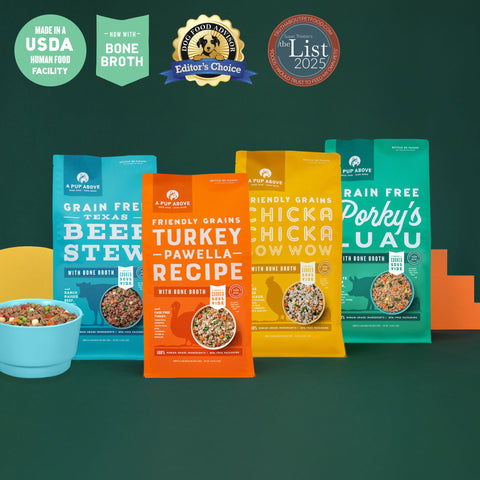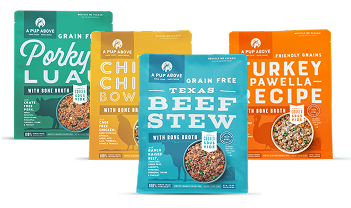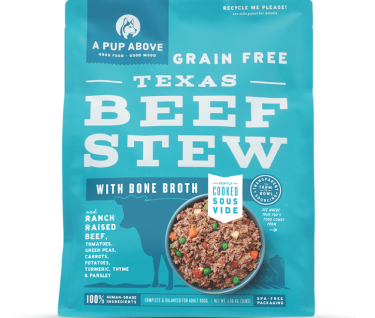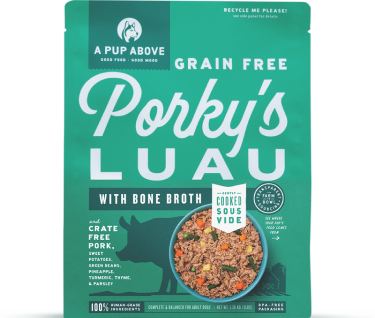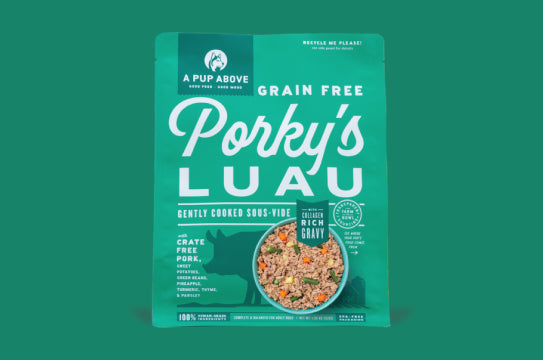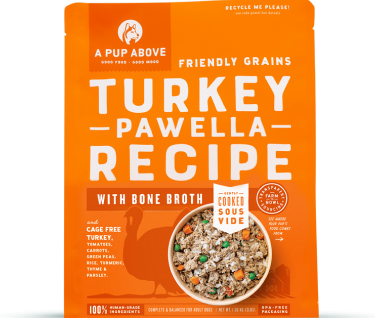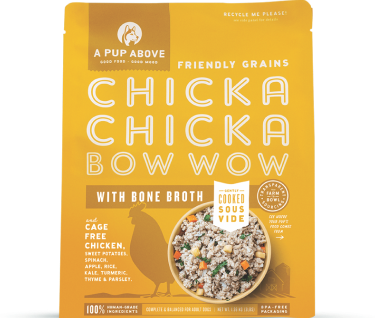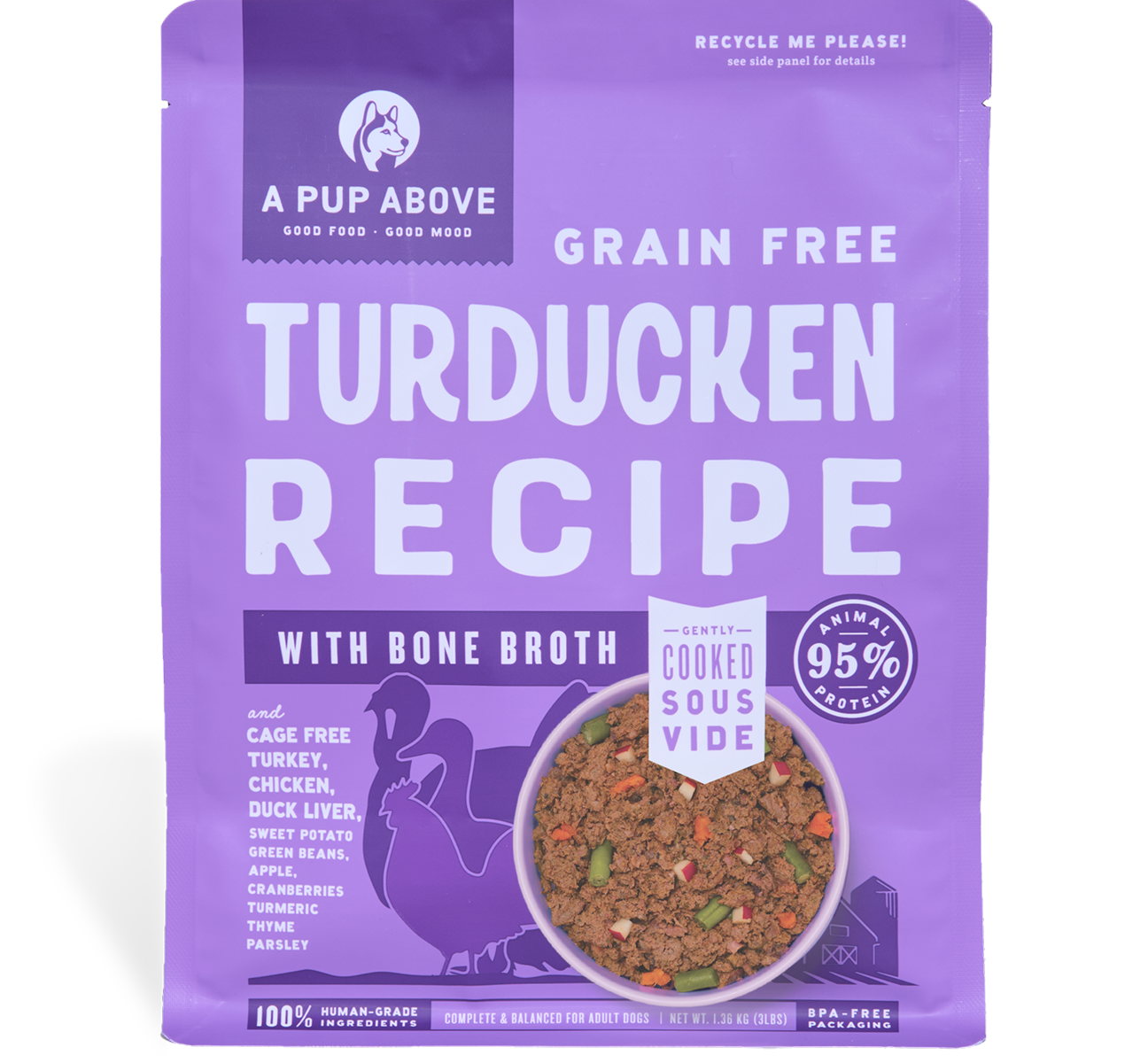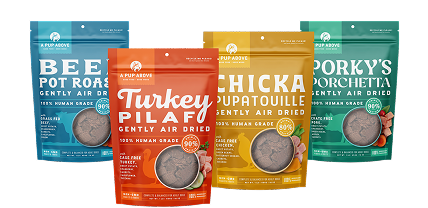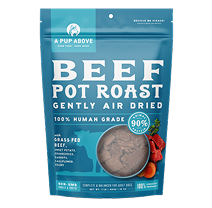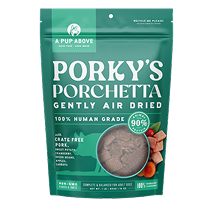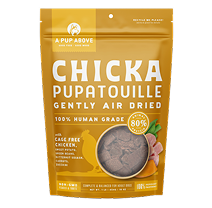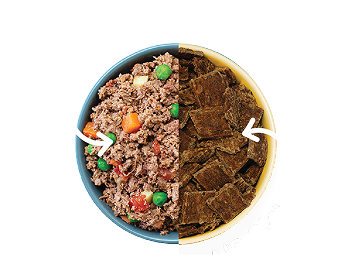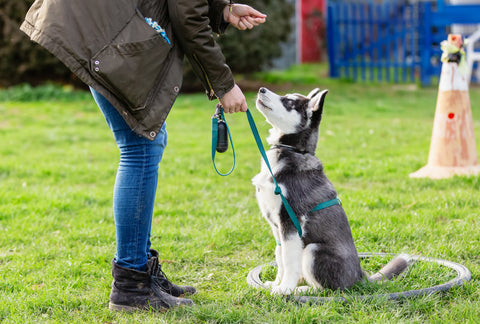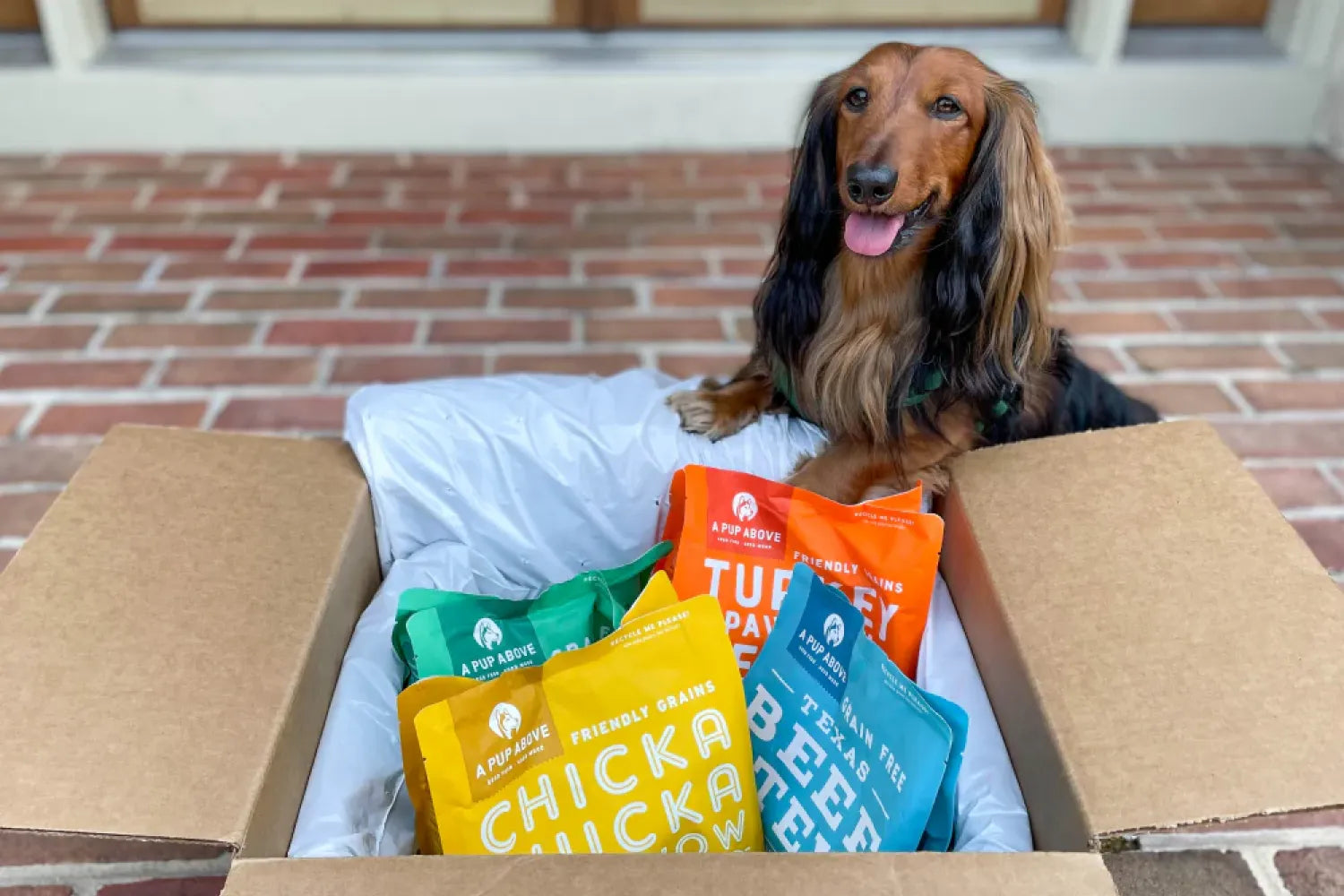
What To Know About Low Carb Dog Food
Table of Contents
- Here’s What You Need To Know About Low-Carb Dog Food
- Why Is a High-Protein, Low-Carbohydrate Diet Healthy for Dogs?
- What Are Good Low-Carb Foods for Dogs?
- How Do You Transition Your Dog to a Low-Carb Diet Without the Drama?
- High-Calorie Diets and Health Problems in Dogs
- What Are Foods To Potentially Avoid or Minimize in My Pup’s Diet?
- The Bottom Line
Some dogs will eat anything that hits the floor — others act like every meal is a high-stakes negotiation. No matter where your pup falls on the scale, figuring out what to feed them can feel like a part-time job. Between trends, opinions, and labels with more buzzwords than actual food words, it’s easy to overthink it.
At A Pup Above, we’re all about keeping things simple (and tasty). So, if you’ve been curious about low-carb dog food — what it is, what it isn’t, and whether it’s right for your pup — keep reading.
Here’s What You Need To Know About Low-Carb Dog Food
“Low carb” is one of those phrases that gets tossed around a lot — but when it shows up on your dog’s food label, what does it actually mean?
In general, low-carb dog food is made with fewer starchy ingredients (like potatoes, corn, rice, or wheat) and instead focuses more on protein and healthy fats. Unlike humans, dogs don’t need carbs to thrive. While they can digest them, carbs aren’t essential. So, low carb just means your pup’s food skips the filler and leans into more nutrient-dense ingredients.
Why Is a High-Protein, Low-Carbohydrate Diet Healthy for Dogs?
You now know what low-carb dog food is, but what’s the big deal? Believe it or not, there are a bunch of legit reasons to lean into high-protein, low-carb meals for your pup — especially when it comes to long-term wellness.
Here’s how it can help:
Supports Natural Energy Levels
Dogs naturally get their energy from protein and fat — not a bunch of filler carbs. A high-protein diet fuels them in a way that aligns with how their bodies are built. That means more steady energy for zoomies, fetch, and sniffing literally every corner of the park.
Helps Maintain a Healthy Weight
Extra carbs can pile on extra calories fast. And since many commercial dog foods are packed with starches, it’s easy for pups to gain weight without you even realizing it. Protein helps keep them full without the crash, making it easier to manage their weight and portion sizes.
Builds and Maintains Lean Muscle
Protein = muscle food. Whether you’ve got a young, active pup or a senior dog who needs help maintaining strength, high-quality protein helps support healthy muscles, joints, and mobility over time. It’s especially important as dogs age and naturally start to lose muscle mass.
Supports Skin, Coat, and Overall Wellness
A protein-rich diet also helps keep your dog’s skin and coat looking and feeling its best — less shedding, fewer flakes, more shine. Plus, when carbs aren’t taking up space, there’s more room for nutrient-dense ingredients that actually support whole-body health.
What Are Good Low-Carb Foods for Dogs?
When it comes to our pups, we get it — you want to feed them like family. But with shelves full of mystery meat and ingredient lists longer than your last grocery receipt, it can be hard to know what’s actually good. At A Pup Above, we keep it real with science-backed, low-carb ingredients that don’t just fill your dog’s bowl — they fuel your dog’s life.
Here are some of the superstar foods you’ll find in our recipes:
Sweet Potatoes
These are a favorite for a reason. Sweet potatoes are a complex carbohydrate, meaning they digest more slowly than simple carbs and help keep blood sugar levels steady.
They’re rich in fiber (great for digestion), loaded with vitamin A (hello, healthy vision), and bring a natural sweetness that dogs love. Bonus: they’re also a good source of potassium and manganese, which support everything from muscle health to metabolism.
Green Beans
Green beans bring a satisfying crunch, but they also bring the goods nutritionally. They’re low in calories and carbs but high in fiber, iron, calcium, and vitamins B6, A, C, and K. We love including them in our meals because they help round out the plate with bulk and nutrition — without weighing your pup down with extra sugar or starch.
Tomatoes & Carrots
Both of these make a regular appearance in our recipes, and for good reason. Tomatoes (in small, properly prepared amounts — no leaves or stems!) are rich in lycopene, which supports heart and immune health.
Carrots are naturally low in carbs and high in beta-carotene, a precursor to vitamin A, which helps support vision, skin, and immune function. Plus, they add a little crunch and color, which we think is always a win.
Bone Broth
You’ll find bone broth in all of our recipes. It’s not just for taste (though dogs are obsessed). It’s packed with amino acids, collagen, and gelatin — all of which support joint, gut, and skin health.
Bone broth also adds moisture, which is especially helpful for dogs who don’t drink much water. Think of it as the flavorful, nutrient-rich base that ties everything together in a pup-friendly, slurp-worthy way.
Pineapple, Apples & Superherbs
A little fruit goes a long way. Pineapple and apples provide natural enzymes and fiber, which can help with digestion and keep things moving. They also add natural sweetness without relying on processed sugars or syrups.
And herbs like turmeric, thyme, and parsley? They’re more than just seasoning. These “superherbs” are packed with antioxidants and plant compounds and help support your dog’s joints, digestion, and immune system.
How Do You Transition Your Dog to a Low-Carb Diet Without the Drama?
Thinking about swapping your pup’s food for something lower in carbs? Great idea — but don’t just yank the kibble and toss in a new bowl overnight.
Dogs have sensitive stomachs, and big changes can lead to some "tummy turbulence." The good news? Transitioning to a low-carb, high-protein diet doesn’t have to be complicated. A slow and steady switch is all it takes.
- Start Slow (Like 25% Slow): Begin by mixing 25% of the new low-carb food with 75% of your dog’s current food for a few days. This helps their digestive system ease into the change without throwing a fit.
- Watch and Wait: Keep an eye on how your dog responds — both in the bowl and in the backyard. Slight changes are normal, but if things seem off (loose stool, upset tummy, major disinterest), slow the transition even more.
- Gradually Increase the New Food: After about three or four days, move to a 50/50 split. A few days later, go to 75% new food and 25% old food. If your pup’s handling it well, you can be fully transitioned by day seven to 10.
- Keep Portion Sizes in Check: Low-carb doesn’t mean low-calorie. Pay attention to feeding guidelines, and adjust based on your pup’s size, age, and activity level. Don’t worry — your dog won’t miss the filler.
- Stay Consistent: Once you’ve made the switch, try to stick with it. Dogs thrive on consistency — and so do their digestive systems.
Keep an eye on your pup throughout the process. Most dogs adjust just fine to fewer carbs, especially when their meals are packed with real flavor and real nutrients. But every dog is different. If you notice changes in energy, appetite, or digestion that don’t settle within a week or two, it never hurts to check in with your vet.
High-Calorie Diets and Health Problems in Dogs
Wondering if high-calorie food is really a big deal for dogs? It can be — especially if your pup isn’t running marathons or herding sheep all day.
Here’s the thing: dogs need calories, but they need the right kind in the right amount. When a dog’s diet is loaded with empty calories — think: ultra-processed foods packed with starchy fillers and low-quality fats — it can lead to slow weight gain that adds up fast.
And that extra weight? It doesn’t just affect how fast they run or how long they play. Over time, it can strain joints, raise the risk of diabetes, and contribute to heart disease. Not exactly the kind of stuff we want for our best friend.
That’s why we’re so focused on food that fuels. At A Pup Above, we cook our meals low and slow, using the sous-vide method to lock in nutrients and keep things lean and protein-rich. Every recipe is carefully portioned with real, human-grade ingredients — no sketchy fillers or unnecessary starch bombs.
High-calorie diets might fly under the radar, but they can lead to big health issues over time. The goal isn’t to cut calories too low — it’s about feeding smarter, not more. Think high-quality protein, fiber-filled veggies, and plenty of naturally occurring nutrients. Your dog’s body will thank you for it — and so will their vet.
What Are Foods To Potentially Avoid or Minimize in My Pup’s Diet?
We talked about why protein matters, covered which low-carb foods actually pull their weight, and touched on how high-calorie meals can sneak up on your pup’s health — but what about the stuff you might want to skip altogether?
The truth is, not all dog food ingredients are doing your dog any favors. One big red flag? Highly processed fillers like corn, wheat, and soy — they’re often used to bulk up food without adding much real nutrition. Some pups do fine with grains (which is why we offer grain-free and grain-inclusive meals), but low-quality grains or refined carbs? That’s another story.
You’ll also want to keep an eye out for vague terms like “meat meal” or “animal by-products.” These mystery ingredients usually come from leftovers of unknown origin — and we’re just gonna say it: if you wouldn’t eat it, your dog probably shouldn’t either.
Then there’s added sugar, artificial colors, and preservatives. Dogs don’t need food to look like rainbow cereal, and their bodies definitely don’t benefit from all that extra junk. Long story short: if the ingredient list reads like a chemistry experiment, it’s probably time to rethink the bowl.
The Bottom Line
Low-carb dog food doesn’t have to be complicated — or boring. At A Pup Above, we believe in giving dogs food that’s full of real, whole ingredients and none of the fluff. Whether your pup’s a picky eater, a snack hoarder, or somewhere in between, a diet lower in carbs and higher in protein can help support their energy, weight, and overall health.
If you’re thinking about making the switch, take it slow, watch your pup, and trust your gut. Chances are, they’ll thrive — and maybe even lick the bowl clean. We’d call that a win.
Sources:
Are There Benefits to Low-Carb Dog Food | Dog Food Advisor
role of carbohydrates in canine and feline nutrition | Animal Frontiers | Oxford Academic
Are sweet potatoes healthy? This colorful veggie packs in these health benefits | USA Today
Top Stories

Why Do Dogs Lick Their Paws?

Why Do Dogs Whimper & Make Noises in Their Sleep?
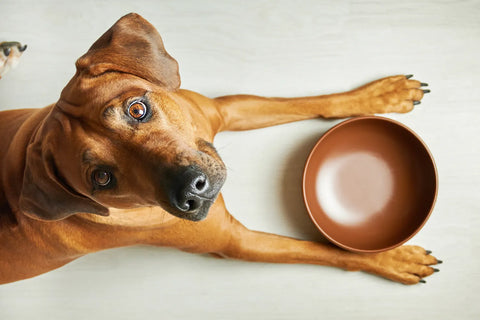
Healthy Vet-Approved Homemade Dog Food Recipes
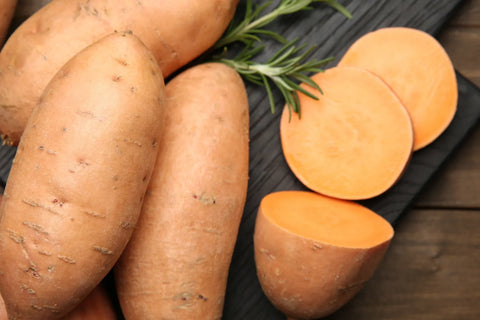
How To Cook Sweet Potatoes for Dogs
